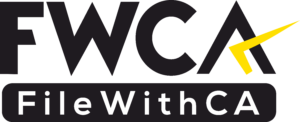Complete List of NIC Codes | Services | MSME | Updated List 2024

National Industrial Classification (NIC) codes are statistical standards for developing and maintaining a comparable database for various economic activities. Here at File With CA, we provide this guide with aims to explain the purpose, structure, and application of NIC codes comprehensively. Here, we’ll explore what NIC codes are, and how they are structured, and provide a detailed list of these codes in a format that is easy to understand.
Introduction to NIC Codes
Contents
- Introduction to NIC Codes
- Purpose of NIC Codes
- Structure of NIC Codes
- Application of NIC Codes
- Complete List of NIC codes
- Section A: Agriculture, Forestry and Fishing
- Section B: Mining and Quarrying
- Section C: Manufacturing
- Section D: Electricity, Gas, Steam and Air Conditioning Supply
- Section E: Water Supply; Sewerage, Waste Management and Remediation Activities
- Section F: Construction
- Section G: Wholesale and Retail Trade; Repair of Motor Vehicles and Motorcycles
- Section H: Transportation and Storage
- Section I: Accommodation and Food Service Activities
- Section J: Information and Communication
- Section K: Financial and Insurance Activities
- Section L: Real Estate Activities
- Section M: Professional, Scientific, and Technical Activities
- Section N: Administrative and Support Service Activities
- Section O: Public Administration and Defence; Compulsory Social Security
- Section P: Education
- Section Q: Human Health and Social Work Activities
- Section R: Arts, Entertainment and Recreation
- Section S: Other Service Activities
- Section T: Activities of Households as Employers; Undifferentiated Goods- and Services-Producing Activities of Households for Own Use
- Section U: Activities of Extraterritorial Organizations and Bodies
- Conclusion
NIC codes are used to classify business activities in a standardized way across the Indian economy. These codes are essential for the analysis of economic statistics, and they play a crucial role in comparing economic activities across international boundaries as well. The Ministry of Statistics and Programme Implementation (MoSPI) of the Government of India is responsible for maintaining and updating the NIC code system.
Purpose of NIC Codes
NIC codes serve several critical purposes:
- Economic Analysis: They facilitate the collection and analysis of economic data, helping in assessing the growth and development of various sectors.
- Policy Making: Governments use NIC codes to devise industry-specific policies.
- Taxation and Regulation: They assist in simplifying the process of taxation and other regulatory practices by categorizing businesses into detailed industry classes.
- International Comparison: NIC codes align with the International Standard Industrial Classification (ISIC), allowing for the comparability of economic data globally.
Structure of NIC Codes
The structure of NIC codes is hierarchical and is broken down into several levels of detail, making it easier to categorize industries at various levels of specificity:
- Section: The broadest category is represented by alphabetic codes (A to U).
- Division: Two-digit numerical codes.
- Group: Three-digit numerical codes.
- Class: Four-digit numerical codes.
- Sub-Class: Five-digit numerical codes, providing the most detailed classification.
Each level provides more specific details about the economic activities being classified.
Application of NIC Codes
NIC codes are used in various administrative, regulatory, and tax registration processes. They are integral in:
- Filing tax returns
- Company registrations
- Obtaining industry-specific licenses
- Conducting market research
- Statistical analysis and reporting
Complete List of NIC codes
Here is an exhaustive list of NIC codes structured into sections, divisions, groups, classes, and sub-classes. For brevity, only sections and divisions are displayed in this example, and a more detailed breakdown can be accessed through official publications or our detailed client reports.
Here’s an overview of the sections and divisions:
Section A: Agriculture, Forestry and Fishing
- 01 – Crop and animal production, hunting, and related service activities
- 02 – Forestry and logging
- 03 – Fishing and aquaculture
Section B: Mining and Quarrying
- 05 – Mining of coal and lignite
- 06 – Extraction of crude petroleum and natural gas
- 07 – Mining of metal ores
- 08 – Other mining and quarrying
- 09 – Mining support service activities
Section C: Manufacturing
- 10 – Manufacture of food products
- 11 – Manufacture of beverages
- 12 – Manufacture of tobacco products
- 13 – Manufacture of textiles
- 14 – Manufacture of wearing apparel
- 15 – Manufacture of leather and related products
- 16 – Manufacture of wood and products of wood and cork, except furniture; manufacture of articles of straw and plaiting materials
- 17 – Manufacture of paper and paper products
- 18 – Printing and reproduction of recorded media
- 19 – Manufacture of coke and refined petroleum products
- 20 – Manufacture of chemicals and chemical products
- 21 – Manufacture of pharmaceuticals, medicinal chemical and botanical products
- 22 – Manufacture of rubber and plastics products
- 23 – Manufacture of other non-metallic mineral products
- 24 – Manufacture of basic metals
- 25 – Manufacture of fabricated metal products, except machinery and equipment
- 26 – Manufacture of computer, electronic and optical products
- 27 – Manufacture of electrical equipment
- 28 – Manufacture of machinery and equipment n.e.c.
- 29 – Manufacture of motor vehicles, trailers, and semi-trailers
- 30 – Manufacture of other transport equipment
- 31 – Manufacture of furniture
- 32 – Other manufacturing
- 33 – Repair and installation of machinery and equipment
Section D: Electricity, Gas, Steam and Air Conditioning Supply
- 35 – Electricity, gas, steam, and air conditioning supply
Section E: Water Supply; Sewerage, Waste Management and Remediation Activities
- 36 – Water collection, treatment, and supply
- 37 – Sewerage
- 38 – Waste collection, treatment, and disposal activities; materials recovery
- 39 – Remediation activities and other waste management services
Section F: Construction
- 41 – Construction of buildings
- 42 – Civil engineering
- 43 – Specialized construction activities
Section G: Wholesale and Retail Trade; Repair of Motor Vehicles and Motorcycles
- 45 – Wholesale and retail trade and repair of motor vehicles and motorcycles
- 46 – Wholesale trade, except for motor vehicles and motorcycles
- 47 – Retail trade, except for motor vehicles and motorcycles
Section H: Transportation and Storage
- 49 – Land transport and transport via pipelines
- 50 – Water transport
- 51 – Air transport
- 52 – Warehousing and support activities for transportation
- 53 – Postal and courier activities
Section I: Accommodation and Food Service Activities
- 55 – Accommodation
- 56 – Food and beverage service activities
Section J: Information and Communication
- 58 – Publishing activities
- 59 – Motion picture, video and television program production, sound recording, and music publishing activities
- 60 – Programming and broadcasting activities
- 61 – Telecommunications
- 62 – Computer programming, consultancy, and related activities
- 63 – Information service activities
Section K: Financial and Insurance Activities
- 64 – Financial service activities, except insurance and pension funding
- 65 – Insurance, reinsurance, and pension funding, except compulsory social security
- 66 – Activities auxiliary to financial services and insurance activities
Section L: Real Estate Activities
- 68 – Real estate activities
Section M: Professional, Scientific, and Technical Activities
- 69 – Legal and accounting activities
- 70 – Activities of head offices; management consultancy activities
- 71 – Architectural and engineering activities; technical testing and analysis
- 72 – Scientific research and development
- 73 – Advertising and market research
- 74 – Other professional, scientific, and technical activities
- 75 – Veterinary activities
Section N: Administrative and Support Service Activities
- 77 – Rental and leasing activities
- 78 – Employment activities
- 79 – Travel agency, tour operator, and other reservation service and related activities
- 80 – Security and investigation activities
- 81 – Services to buildings and landscape activities
- 82 – Office administrative, office support, and other business support activities
Section O: Public Administration and Defence; Compulsory Social Security
- 84 – Public administration and defense; compulsory social security
Section P: Education
- 85 – Education
Section Q: Human Health and Social Work Activities
- 86 – Human health activities
- 87 – Residential care activities
- 88 – Social work activities without accommodation
Section R: Arts, Entertainment and Recreation
- 90 – Creative, arts and entertainment activities
- 91 – Libraries, archives, museums, and other cultural activities
- 92 – Gambling and betting activities
- 93 – Sports activities and amusement and recreation activities
Section S: Other Service Activities
- 94 – Activities of membership organizations
- 95 – Repair of computers and personal and household goods
- 96 – Other personal service activities
Section T: Activities of Households as Employers; Undifferentiated Goods- and Services-Producing Activities of Households for Own Use
- 97 – Activities of households as employers of domestic personnel
- 98 – Undifferentiated goods- and services-producing activities of private households for their use
Section U: Activities of Extraterritorial Organizations and Bodies
- 99 – Activities of extraterritorial organizations and bodies
Conclusion
NIC codes are a fundamental tool for understanding and analyzing the structure of the economy. They are crucial for businesses, policymakers, and researchers alike. As an accounting firm with expertise in economic and statistical analysis, we emphasize the importance of correctly classifying economic activities using NIC codes to ensure compliance and accurate data analysis. For businesses, understanding and applying the correct NIC code is crucial for regulatory and tax compliance, making it an essential aspect of business operations.






